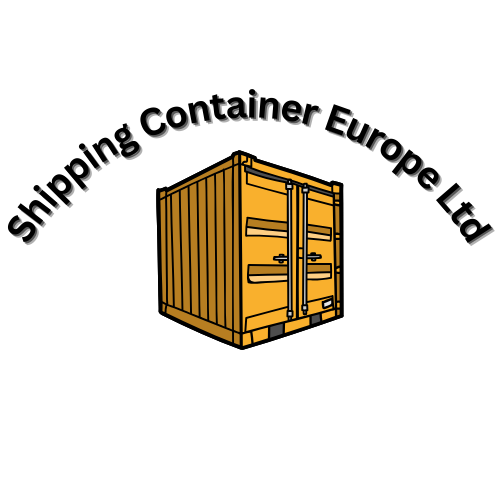The Ultimate Guide to Storage Containers:
Smart Storage for Daily Life and Global Trade
Storage containers do more than keep your things organized. They play a vital role in global shipping, food safety, and even in the latest home trends. From the pantry to the cargo ship, today’s containers come in every size, shape, and material you can imagine. Whether you need tidy shelves or climate-controlled shipping, let’s explore how the right container makes all the difference.
Common Types of Storage Containers
Containers aren’t just those giant boxes you see at ports. They range from sturdy shipping units to everyday pantry staples. Let’s break down the most common types.
Shipping and Industrial Containers
Shipping and industrial storage containers handle the toughest jobs. Each type fits specific needs:
- Dry Storage Containers: These are the classic steel boxes used in shipping. They move goods across the world, shielding cargo from wind, water, and thieves.
- Flat Rack Containers: With collapsible sides, flat racks hold large or awkward objects—think heavy machinery or vehicles.
- Open Top Containers: These have removable roofs, making it easy to load oversized items with cranes.
- Refrigerated Containers (Reefers): Designed for perishable goods, reefers keep food, medicine, and flowers cold for days, no matter the outside weather.
- Open Side and Tank Containers: Open side containers offer wider access, perfect for bulky items. Tank containers carry liquids like chemicals or cooking oil.
- Bulk Containers: Used in agriculture or mining, these carry grains, powders, and ores in bulk.
Household and Food Storage Containers
At home, storage is just as important.

Common personal-use containers include:
- Plastic Bins and Totes: Sturdy and affordable, perfect for organizing closets and attics.
- Glass Jars: Ideal for food storage, canning, and leftovers. Easy to clean and see through.
- Metal Boxes: Great for tools, keepsakes, or kitchen staples.
- Silicone Bags and Mylar Pouches: Increasingly popular for snacks and long-term storage, especially for reducing plastic waste.
Materials and Durability: Choosing the Right Storage Container
The material you pick matters for food safety, longevity, and environmental impact.
Benefits and Drawbacks of Plastics and Polyethylene
Plastic dominates the storage market for its flexibility and price point. HDPE and polypropylene are tough, lightweight, and usually food safe. They rarely shatter and handle bumps well. But over time, plastics can stain, pick up odors, and if not BPA-free, may leach chemicals.
- Pros: Cheap, versatile, lightweight.
- Cons: Prone to warping, can stain, environmental impact if not recycled.
Glass, Stainless Steel, and Alternatives
Glass containers look sleek, clean easily, and never absorb smells or stains. They’re perfect for foods but heavy and can break. Stainless steel is famously tough, rust-proof, and lasts for decades. It’s ideal for lunchboxes and dry goods.
- Pros: Durable, easy to sanitize, chemical-free.
- Cons: Glass is heavy and breakable; metal is more expensive.
Eco-Friendly and Sustainable Material Options
Newer materials bring sustainability into focus. Bamboo storage stands out for being natural and biodegradable. Mylar and silicone offer reusable, flexible solutions for food storage. Brands are using recycled plastics, and innovations like bioplastic and compostable materials are growing.
- Pros: Lower environmental impact, reusable options.
- Cons: Often cost more upfront, may require special cleaning.
Innovations in Storage Container Design and Technology
Storage isn’t just about stuffing things in boxes anymore. Smart technology and innovative builds are changing the game—from global shipping to your kitchen counter.
Smart and Connected Container Technologies
IoT-enabled containers can track temperature and humidity, alerting you if food risks spoiling or if there’s been tampering. Shipping companies rely on GPS sensors and automated inventory systems to cut losses and drive efficiency.
Modular, Foldable, and Space-Saving Designs
Collapsible bins and stackable units take over in homes and warehouses alike. High cube shipping containers provide extra headroom, while modular household bins fit together in clever ways to help you customize your closet or garage.
Sustainable Innovations and Green Materials
Growing pressure from consumers and regulations has fast-tracked sustainable design. Recycled steel, BPA-free plastics, and refillable systems (even for things like deodorant or dry goods) help reduce waste. Solar-powered containers for off-grid sites and insulated “green” containers lower energy use for both shipping and storage.
Conclusion
Storage containers influence almost every part of life, from keeping your cereal crisp to supporting entire nations’ trade. With new tech, eco-friendly materials, and smarter designs, containers are smarter and more versatile than ever. The right container doesn’t just hold your stuff—it protects, preserves, and even powers the spaces where you live and work. As trends push for sustainability and innovation, expect your next box or bin to do a lot more than you ever thought possible.
